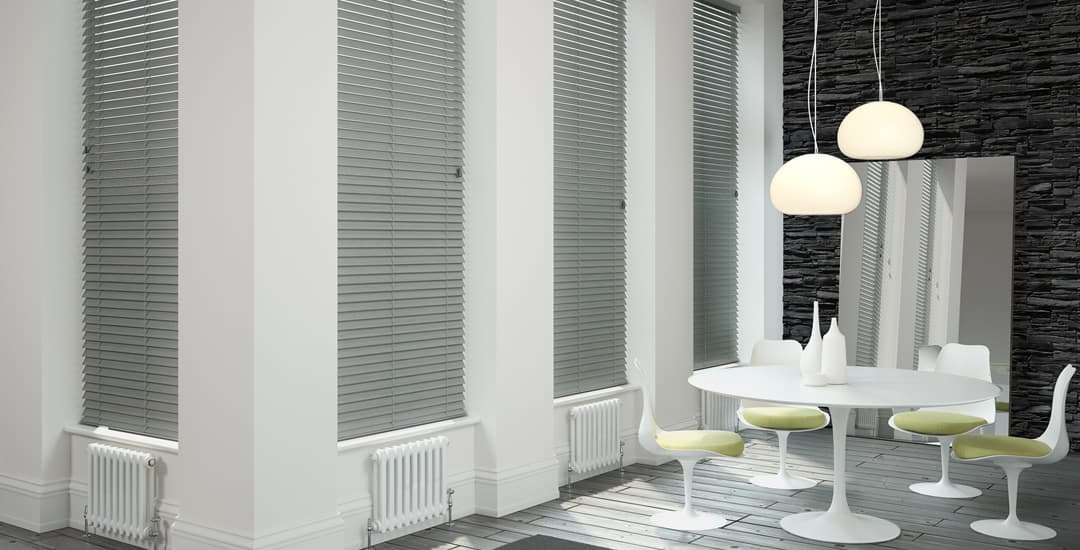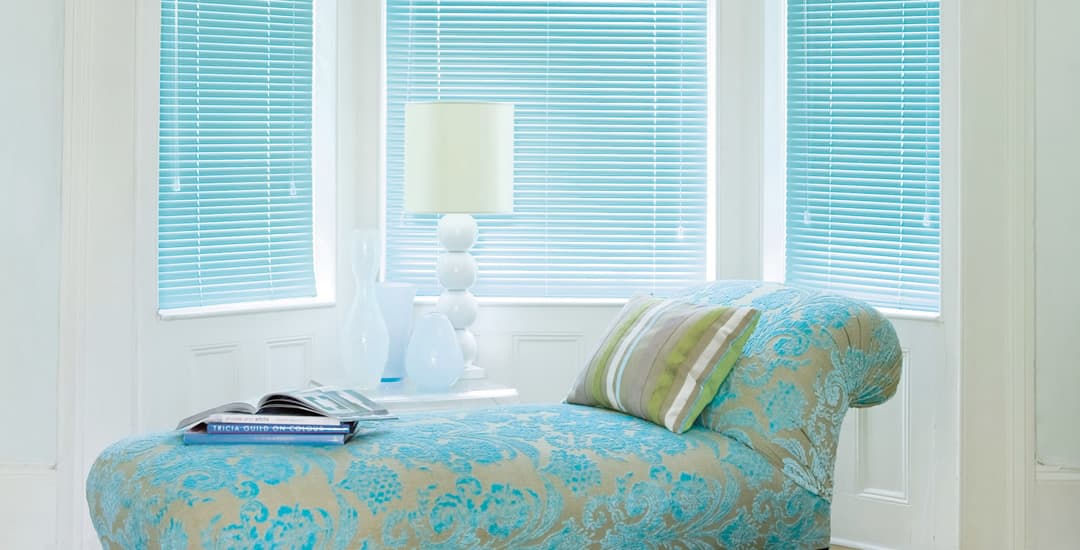
What’s the difference between Venetian blinds and wooden blinds? The answer to this has a few different elements to it because technically, a wooden blind is a type of Venetian blind.
However, when we say “Venetian blind” without any qualifier on what it’s made of, we’re usually talking about aluminium Venetian blinds specifically.
On paper then, a wooden blind is a Venetian blind; but in terms of the difference between Venetian blinds made of wood and those made of aluminium, there are a few real differences to mention, aside from the obvious that they’re made of different materials.
In this blog post I’ll answer pretty much every possible interpretation of the question “what is the difference between Venetian blinds and wooden blinds,” in intricate, slat-width-related detail.
What is a Venetian blind and what is a wooden blind?
To start off then, it’s wise to have a good basic understanding of what Venetian blinds and wooden blinds respectively actually are, and what they look like and how they function.
As I covered in the introduction, a wooden blind is a type of Venetian blind; and the defining trait of Venetian blinds as a family is that they’re made of horizontal slats that can be tilted at the precise angle of your choosing to allow you to enjoy the view and filter the light, as well as being able to be raised and lowered like any other blind.
A blind that looks like this and acts like this is a Venetian blind, and this includes slatted blinds made of wood, and faux-wood for that matter too.
A wooden blind is always a Venetian blind, but a Venetian blind isn’t always a wooden blind…
The difference between Venetian blinds and wooden blinds is essentially best explained by gaining an understanding of both the materials and industry terminology used for them, which I’ve tried to sum up as succinctly as possible below:
- Venetian blinds as a type or style can be made in several materials, so you get wooden Venetian blinds, faux-wood Venetian blinds, aluminium Venetian blinds, and sometimes other options too.
- When we use the term “Venetian blind” as a standalone term without qualifying the material it is made of, we’re almost universally referring to aluminium Venetian blinds, which are the most common and ubiquitous type of Venetian blinds overall.
- Wooden blinds are also a type of Venetian blinds; but we tend to just call them wooden blinds, wood blinds, or real wood blinds, without mentioning the fact that they’re Venetians.
- Venetian wooden blinds are the only type of wooden blinds made, and so when someone says “wooden blind,” there can’t be any confusion as to whether they’re talking about wooden Venetian blinds or some other type of wooden blinds; there are no other types of wooden blinds.
That’s the short version!
What is the difference between Venetian blinds and wooden blinds?

Finally, as well as the materials that distinguish a blind as either a Venetian (aluminium) blind or a wooden (Venetian) blind, there tends to be some level of divergence between the two types in other respects too.
- Aluminium Venetian blinds tend to have narrower individual slats than wooden blinds; 25mm wide being by far the most common.
- Wooden blinds, on the other hand, can be made in 25mm, 35mm, and 50mm slats, with 50mm being the most popular choice and 25mm the least common.
- Also, both Venetian blinds and wooden blinds are made as standard with what we call lift cords; these run up through each individual slat at both ends of the blind (and sometimes along the length of the blind too) to allow it to be lifted and lowered.
- Wooden blinds can be made with ladder tapes instead of lift cords; these run up and down the front and back of the slats rather than through them, so you have two options when it comes to wooden blinds; but Venetian blinds are made with lift cords only, and never ladder tapes.
- Also, wooden blinds are not waterproof, wood being a natural material that will absorb water and begin to suffer from this in short order.
- Venetian blind slats themselves are waterproof and so, they may be a potential option for rooms like kitchens and bathrooms, although their lift cords may absorb water or humidity from the air.
- Price-wise there’s quite a big divergence between Venetian blinds and wooden blinds too; Venetian blinds tend to fall towards the bottom of the price scale of window blinds ranked by type, while real wood blinds fall towards the top.
That’s about it!




